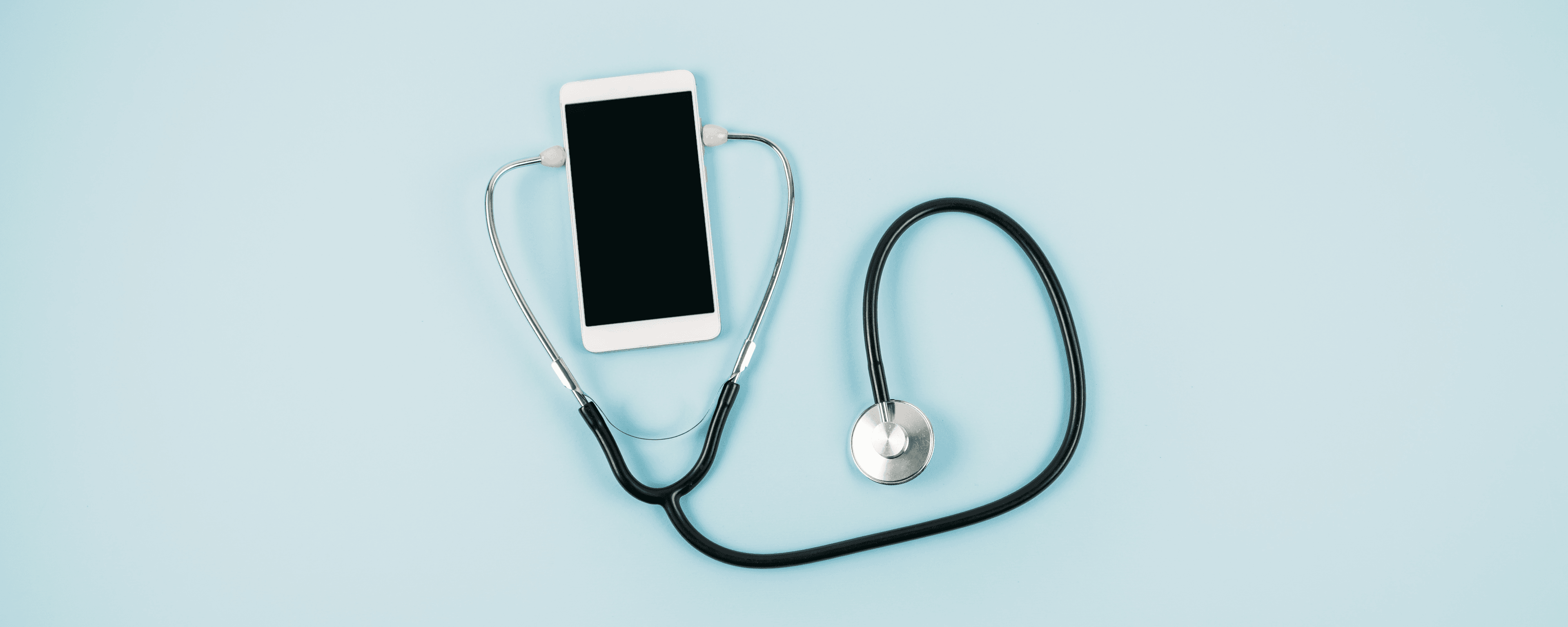How to Optimize Telehealth Technology for Better Patient Care and Compliance
Telehealth and remote patient monitoring (RPM) solutions empower providers like you to extend medical care to patients without a visit to your office, urgent care center or hospital. Virtual access to your care can be life-changing for patients whose conditions make travel difficult and those living in rural areas where access to care can be limited.
With real-time consultations, continuous monitoring and improved patient engagement, telehealth has become an everyday tool to manage chronic patient conditions such as hypertension and heart disease. By remotely tracking key health indicators like heart rate, blood pressure and other health indicators, RPM helps you begin early intervention, fending off complications or worsening conditions that could lead to emergency care and hospitalization. Using this technology lessens the need for in-person visits while improving communication and achieving positive patient outcomes, increased efficiency, and better allocation of resources.
Many healthcare providers started to use telehealth technologies in the early 2000s but the COVID-19 pandemic accelerated the pace of integrating it into everyday practice. Faced with the need to provide patient care without risking exposure, healthcare systems rapidly overhauled their IT infrastructure to support virtual visits. Now, both providers and patients recognize the convenience, flexibility and accessibility telehealth offers and its use continues to grow.
The increasing demand for virtual visits and other remote services brings significant demands—including the need for reliable network connectivity and strong protections for electronic medical record (EMR) data.
Popular Telehealth Platforms
Current telehealth platforms leading the expansion of virtual patient care are Teladoc, American Well (Amwell) and EHR-Integrated Solutions (like Epic or Cerner).
- Teladoc: Teladoc is the most widely used virtual visit platform because patients and providers find it easy to use and it provides clarity in sound and video. Because of its popularity, its use requires a system with strong concurrency support to handle high traffic without slowing down.
- Amwell: Amwell’s multi-specialty telehealth platform handles sensitive patient information, requiring a secure data exchange to protect PHI and meet compliance obligations.
- EHR-Integrated Solutions: Telehealth solutions like Epic or Cerner come embedded within larger EHR (electronic health record) platforms. To ensure medical professionals can access and view patient information in real time, these systems require continuous, error-free data synchronization.
Getting the most from these platforms requires meeting these integration demands:
- EHR Compatibility: Keeping accurate patient records depends on proper integration—with consistent data formats and rapid information sharing—so data flows correctly and securely between telehealth platforms and EHR systems.
- API & Plugin Dependencies: For telehealth platforms using specific APIs or plugins, keeping the system stable and running reliably means maintaining compatibility, managing version updates and coordinating patch releases across multiple vendors.
- Security & Compliance Overlaps: Each system must use encrypted data exchange, strict access controls and consistent audit trails to remain HIPAA/HITECH compliant.
Why Technical Performance & Security Matters
A telehealth session needs to have a reliable connection and a high level of security. Hiccups in video feeds and data transmission can cause confusion or, worse, clinical errors. Patients expect the same level of confidentiality they would experience at an in-person appointment. Healthcare compliance standards around data security must be followed to protect patient data from unauthorized access.
As telehealth technology continues to open new doors for delivering care services, healthcare organizations must follow these best practices.
High-Performance Network Infrastructure
- Bandwidth & Connectivity: High-quality video calls require a minimum upload speed of 1–3 Mbps per session. Adhere to Quality of Service (QoS) rules to prioritize telehealth sessions over less critical network traffic.
- Redundancy & Failover: Use backup internet connections with load balancing so that even if one network path fails, telehealth visits continue without interruption.
Recommended Security & Compliance Measures
- Secure Transmissions with Encryption: Use end-to-end encryption with secure protocols TLS 1.2 or higher to shield data in transit.
- Access Controls & Audit Trails: Track all data interactions by keeping detailed logs and audit trails. Limit data access to authorized personnel only.
- Consistent Assessments: Run periodic vulnerability scans and penetration tests. Stay ahead of cyber threats with continuous monitoring through a Security Operations Center (SOC).
EHR Integration
- APIs & Plugins: Make sure your telehealth platform supports APIs for smooth data exchange with your EMR system.
- Testing & Validation: Before full implementation, run test scenarios to confirm accurate data flow between telehealth and EMR platforms.
- Ongoing Updates: Prevent compatibility issues and avoid system errors or downtime by staying up to date with software patches and version updates.
Scalability & Cloud Solutions
- Load Balancing: Handle sudden increases in telehealth sessions by distributing traffic across multiple servers.
- Cloud Infrastructure: Practice agile resource scaling using public, private and hybrid cloud environments. Platforms like Kubernetes make it easier to deploy and update telehealth services in real time.
Continuous Monitoring & Support
- 24/7 Monitoring: Proactive tracking of network performance, bandwidth usage, and call quality allows for quick resolutions before issues escalate and affect patient care.
- Managed Services: Partner with a provider like our IT Solutions team to handle ongoing maintenance and troubleshooting, freeing your in-house team to focus on patient care.
Optimizing Your Telehealth System: Benefits & Outcomes
When choosing a telehealth system solution that is best suited for your organization, consider current IT infrastructure and the changes that will be required for a successful deployment. Selecting a proactive IT partner to guide you will make all the difference, resulting in:
- Better Access to Care: Telehealth brings the doctor to patients, especially those in rural areas or with mobility limitations who can now receive care from the comfort and convenience of their homes. Telehealth sessions also result in greater patient engagement through digital reminders and follow-ups.
- Stronger Compliance & Security: Staying current with HIPAA/HITECH requirements along with strong security measures and consistent oversight will protect against data breaches and non-compliance fines while strengthening patient trust.
- Improved Patient Outcomes: RPM of blood pressure, heart rate and other vital signs leads to early interventions, swift clinical decisions and reduced hospital readmissions.
- Reduced Operational Costs: Telehealth eases scheduling burdens and helps optimize staff allocation. Fewer in-person visits also means reduced overhead cost for facilities.
Secure, Efficient Telehealth & RPM Performance with IT Solutions
At IT Solutions, we understand that healthcare organizations like yours need a trusted partner who fully understands the urgency and sensitivity of patient care. We offer a comprehensive and balanced approach to keep your telehealth and RPM systems running effectively and safely.
When you choose IT Solutions, you can expect:
- 24/7 Managed Services: Real-time, around-the-clock monitoring and technical support to reduce downtime, detect system issues and catch security threats before they escalate.
- Security & Compliance Expertise: We use layered security measures, continuous vulnerability assessments and compliance guidance (including HIPAA and HITECH) to safeguard your telehealth platforms and RPM devices. Explore how IT Solutions meets the highest healthcare compliance standards and industry excellence—see our recognitions here.
- Customized Network Design: Our team will tailor bandwidth provisioning and QoS settings so that telehealth sessions run without interruptions or latency.
- Integration Support: We coordinate with major telehealth providers and EHR platforms so that your healthcare professionals receive crucial patient data with minimal disruptions to clinical workflows.
- Scalable Cloud Environments: Whether you use public, private or hybrid cloud models, our cloud infrastructure services help you scale resources rapidly to match telehealth usage spikes.
Ready to Future-Proof Your Telehealth Services?
High-performance telehealth and remote patient monitoring systems aren’t just about technology—they’re about delivering on your promise of accessible, reliable and secure patient care. At IT Solutions, we offer the network expertise, cybersecurity and compliance frameworks you need to protect sensitive patient data and adapt to the evolving demands of modern healthcare.
Contact us today to explore a customized solution and learn how we can design a tailored telehealth infrastructure that meets your organization’s unique needs and safeguards patient health outcomes for the long term. Your telehealth journey starts now—let us be the partner that helps you succeed.

Frequently Asked Questions
- What are the minimum bandwidth requirements for high-quality telehealth sessions?
- For a single high-definition video session at least 1–3 Mbps of upload and download speed is needed. These requirements can increase depending on the number of concurrent sessions and whether the telehealth platform supports additional features like file transfers or multiple participants.
- Can existing on-premises systems be integrated with cloud-based telehealth platforms?
- Yes. Many healthcare organizations use a combination of on-premises and cloud-based systems, especially when they need to integrate telehealth platforms with their EHRs. A number of reliable cloud-based telehealth solutions offer APIs and connectors designed for integration with on-premises EHRs and other clinical systems. Our approach achieves secure, seamless integration using the following:
- Supporting hybrid environments: Securely connecting on-premises and cloud-based applications.
- Ensuring data integrity: We establish continuous monitoring to prevent unauthorized access and maintain compliance.
- Centralized security oversight: We use real-time logging and compliance tracking to streamline your audit preparedness. An assessment of your current IT environment is the best way to determine compatibility and plan for any necessary upgrades.
- Does IT Solutions provide training for clinical staff and administrators?
- Absolutely. We offer ongoing cybersecurity awareness and HIPAA compliance training to make sure everyone understands how to optimize telehealth technology while maintaining compliance and patient privacy. It is a crucial step in protecting patient data and preventing breaches. Specifically, we offer:
-
-
- Security Awareness Training: Educating staff on phishing, password management and HIPAA best practices.
- HIPAA-specific Compliance Training: This helps our partner organizations meet workforce training requirements.
- Incident Response Preparedness: Teaching teams so they know how to identify, report and mitigate security threats.
- How quickly can a healthcare organization scale up if telehealth usage suddenly increases?
- With cloud-based environments and well-configured load balancing, scaling up can happen in a matter of hours or even minutes. IT Solutions helps healthcare organizations maintain the agility needed to handle sudden surges in virtual visits or monitoring patients remotely due to outbreaks or seasonal spikes in demand. Scaling IT services in healthcare—especially telehealth—requires a secure and flexible approach with your virtual patient care, remote monitoring or cloud-based applications. Our solutions will give you the foundation for fast, compliant growth without disruption. We help organizations scale with the following support and services:
-
-
- Cloud-first security and infrastructure: Supports rapid deployment while maintaining compliance.
- 24/7 monitoring and alerting: Prevents performance bottlenecks and ensures system reliability.
- Disaster recovery and incident response: Keeps critical services running, even under increased demand.

